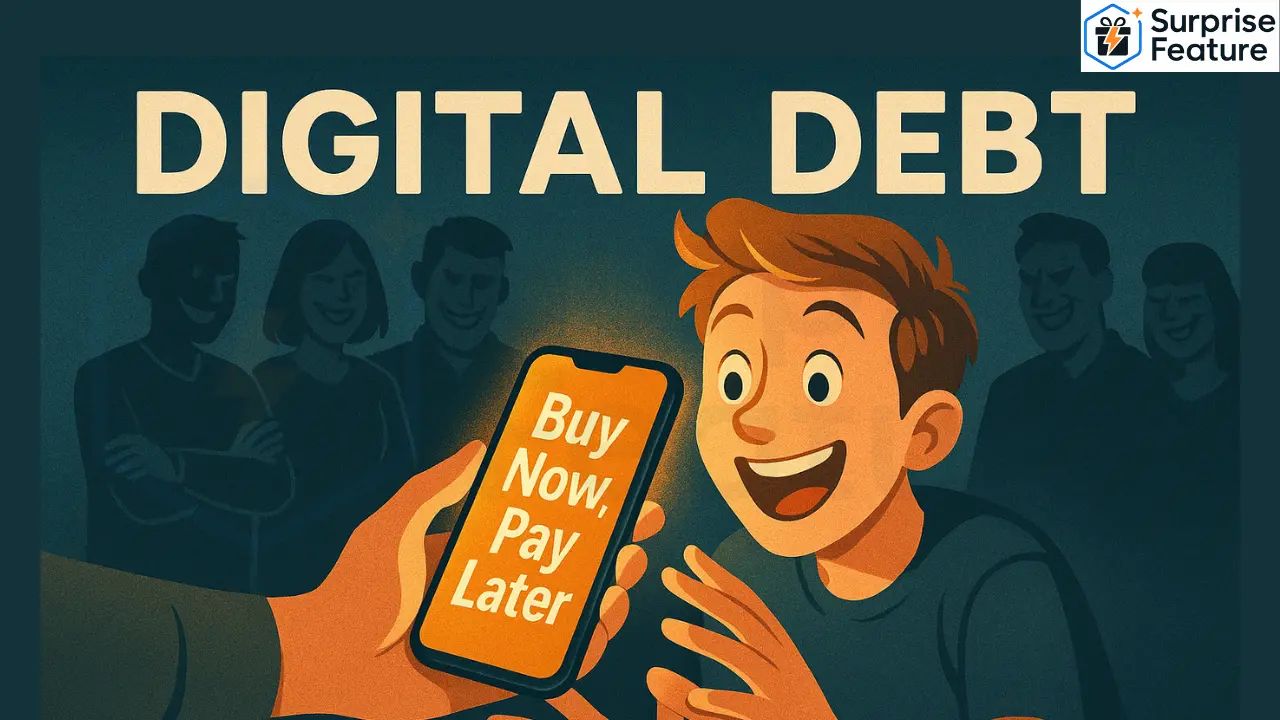Digital Debt: Why Tech Is the New Financial Addiction (And How to Break Free in 2025)

What Is Digital Debt—and Why You Should Be Concerned
In 2025, with over 6.8 billion smartphone users worldwide—about 85% of the global population—the average person checks their phone 142 times a day. But while the world grows increasingly connected, there’s an invisible cost mounting behind the screens: digital debt.
Digital debt isn’t just about money. It’s the emotional, psychological, and lifestyle cost of always chasing the next device, the newest app, or the latest upgrade—often at the expense of financial stability and mental well-being.
The Mechanics Behind Digital Debt
EMIs, BNPL, and Invisible Financial Traps
Gadgets today aren't just bought—they’re financed. Most smartphones, tablets, laptops, and wearables are now purchased using Buy Now, Pay Later (BNPL) services, EMIs, or credit bundles. On paper, it’s convenient. But the catch? Deferred interest, fine-print fees, and a false sense of affordability.
The problem isn’t just overbuying—it’s underestimating how small payments add up across multiple gadgets and services. Many users don’t even realize how much they owe until a collection message arrives.
Subscriptions: The Silent Budget Leak
Cloud storage. Streaming platforms. Premium photo editors. Meditation apps. Even email clients. In 2025, the average tech-savvy user subscribes to over 8 digital services. Individually, they might cost $5 or $10, but collectively, they bleed your budget—quietly and continuously.
Many consumers forget what they subscribed to in the first place. Auto-renewals quietly siphon off earnings, while loyalty to brand ecosystems (Apple, Google, Microsoft) makes cancellation psychologically harder.
Why Tech Companies Profit From Addiction
Dark Patterns and UX Psychology
Big Tech doesn’t just sell products—they design ecosystems to keep you spending. Interfaces use dark patterns like:
- One-click checkout to bypass hesitation
- Infinite scroll to trap attention
- Urgency messages (“Only 1 left!”) to force impulsive decisions
These features don’t exist by accident—they’re engineered to increase user retention and reduce resistance to spending. The goal? Turn one-time buyers into lifetime spenders.
Smartphones: Pocket Debt Machines
Smartphones are now mobile banks, shopping carts, and entertainment hubs. With digital wallets, saved cards, and biometric authentication, spending has never been easier—or more dangerous.
Micro-purchases through in-app upgrades, exclusive content, or digital tokens blur the lines between casual browsing and financial commitment. When combined with constant notifications and FOMO marketing, users fall into a cycle of emotional purchases.
Global Impact: A Widespread Problem
- United States & Europe: BNPL balances have started to rival traditional credit card debt. Gen Z and millennials are the most affected.
- Asia & Africa: Rapid mobile finance adoption is helping financial inclusion—but also pushing low-income users toward digital borrowing they don’t fully understand.
- Latin America: Smartphone EMI programs are booming, yet many buyers default within 6 months due to fluctuating income and rising inflation.
The Real Cost of Digital Debt
- Financial Stress: Missed BNPL payments, device repossession, and interest penalties cause anxiety and economic instability.
- Productivity Decline: Digital multitasking reduces work focus, costing the global economy over $1 trillion annually in lost productivity.
- Mental Health Erosion: Studies link digital addiction to increased anxiety, depression, and decision fatigue.
How to Break the Digital Debt Cycle
1. Audit All Your Digital Spending
Track every subscription, EMI, and digital transaction. Use budgeting tools or spreadsheet trackers to visualize where your money goes. You’ll likely uncover apps or services you no longer need.
2. Reintroduce Friction to Slow Down Purchases
Deliberately remove saved payment methods from browsers and apps. Turn off autofill and biometric approvals. Make yourself pause and think before each purchase.
3. Set Clear Monthly Limits for Tech Spending
Create a “digital budget” that covers gadgets, software, and online services. Stick to it as you would a grocery or rent budget.
4. Own What You Can, Rent What You Must
Instead of financing a $1,200 phone, consider a $300–$400 model paid in full. Review device lifespans, resale value, and software longevity before committing.
5. Recognize & Resist Manipulative Design
Become aware of when you’re being nudged. If you’re clicking fast, stop. Ask yourself: is this urgent, or am I being emotionally tricked?
6. Take Regular Tech Detoxes
Schedule weekends or hours where you’re offline. Reflect on how often tech purchases stem from boredom, peer comparison, or stress.
Conclusion: Reclaiming Your Financial Mind
Digital debt isn’t a conspiracy—it’s a side effect of a world that prioritizes convenience over consciousness. From BNPL traps to manipulative user interfaces, the systems around us are designed for one thing: more spending.
But we can fight back—with awareness, discipline, and by choosing value over vanity. SurpriseFeature.com will keep uncovering the truth behind the tech—but the first step to freedom is yours to take.
So next time your screen flashes a limited-time offer or “upgrade now” alert… ask yourself: “Do I own this device, or does it own me?”